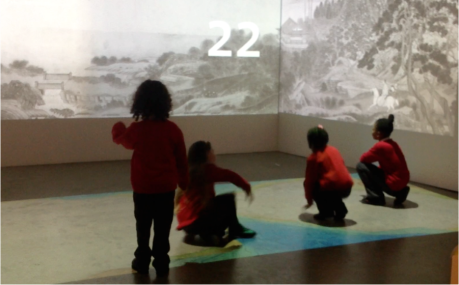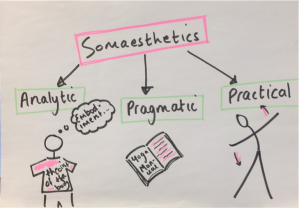by Victoria Grace Walden
Embodiment and actuality sites of a traumatic past
I am standing in the Podgórze district of Kraków, Poland. In 1941, this region, which was designed to house 3,000 residents, was transformed into a Jewish Ghetto which imprisoned 15,000 Polish Jews. Two segments of the Ghetto wall remind today’s visitors of this district’s traumatic past. One of these segments overlooks a children’s playground. How do I relate to the tragic past of this site as I stand here?
Phenomenologists from Maurice Merleau-Ponty and Vivian Sobchack to Jenny Chamarette, all consider subjectivity to arise from the space in-between the different bodies of experience. The space in-between suggests that meaning arises from the intertwining of the different bodies, rather than belonging to one particular subject. Usually phenomenology focuses on the embodied (sometimes human) subject and their relationship with objects or other people. However, at this particular site, I feel like an intruder -a tourist- observing an interaction between two inanimate objects which seem to be communicating with each other. Here, I begin to realise the significance of the space in-between. In front of me stands a grey wall, its three-foot panels designed to represent Jewish gravestones. These are fragments of the remaining Ghetto wall. I reach out to touch this wall, but I feel uncomfortable doing so. It’s darkness, size and shape seems to cast a shadow over the space where I stand. I am saddened by the past that once inhabited the other side of this wall.
However, in front of this wall I see children’s play equipment. It is brightly coloured and on springs – there is a vibrancy and vitality to its presence. The equipment reminds me of being young and the joy and freedom of the imagination of play.
What is most striking for me, though, is the space in-between these two objects. Both the wall and the equipment conjure strong, but contrasting emotions. The space between them expresses an absence and a distance. It is here that I fix my gaze – are people that come here to enjoy the present use of this site aware of its tragic past? Could the inhabitants once trapped behind this wall ever have imagined a time when vitality and freedom might return to this site? This space in-between signifies the distance between then and now, and the absence of those who were once imprisoned here and yet who, in the majority, never returned.
My attention, or my intentionality, is drawn to the absence- the space in-between the two objects and I feel an uncanny relationship to the different temporal dimensions I encounter here – it is neither the past nor the present which becomes the subject of my attention. Rather, it is the space in-between these different eras – for a moment, I feel as if I am embodied in an ahistoric moment – one where my intentionality is drawn to the relationality between temporal dimensions, rather than directed towards any one time. Is it possible to consider experiences as moments outside history? I am now historicising my experience at the site by recording it for the future in this blog. It is now part of my history. Perhaps, it is not that the experience is ahistoric, but rather that this site has drawn my attention to the fact meaning can arises from spatial and temporal relationships. It is here, that I realise turning to the embodied moment allows me to identify embodiment not only as an experience of the now, but as a relationship with different temporal dimensions.







